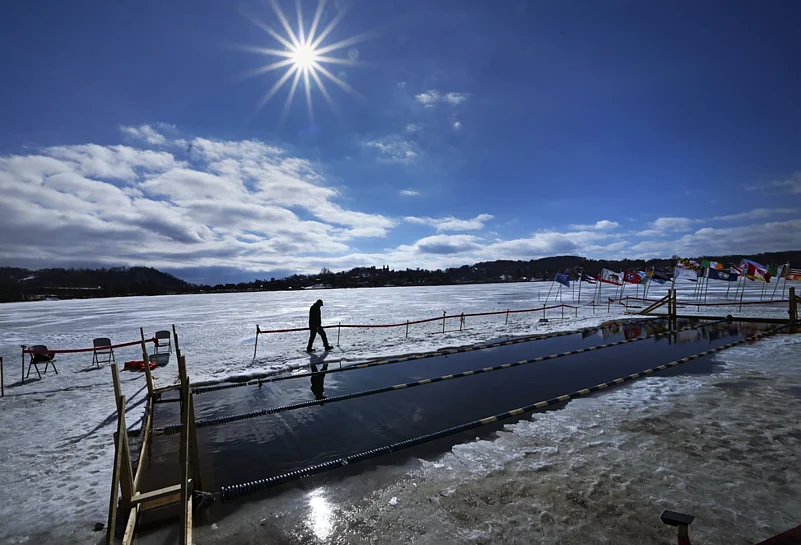The United States has just witnessed what many are calling the "winter that wasn't." Across vast swathes of the nation, the traditional chill of winter never materialized, leaving many states experiencing unprecedented warmth and record-breaking temperatures.
In regions known for their frigid winters like Burlington, Vermont, and Portland, Maine, temperatures failed to plummet below zero even once. States like Minnesota dubbed this period "the lost winter," surpassing even the notorious "year without a winter" of 1877-1878 in terms of warmth.
Michigan, where mosquitoes were spotted in February, extended disaster loans to businesses impacted by the absence of snow. The Great Lakes also witnessed historically low levels of winter ice, with Lake Erie and Lake Ontario nearly devoid of ice.
According to the National Phenology Network, which monitors natural signs of the seasons, spring arrived three to four weeks earlier than the average observed between 1991 and 2020, stretching from Colorado to New Jersey and Texas to the Carolinas.
Meteorologist Jeff Masters of Yale Climate Connections attributes this unusual warmth to a combination of long-term warming trends and the influence of El Niño. The National Oceanic and Atmospheric Administration (NOAA) confirmed that the winter of 2023-2024 was the warmest in nearly 130 years of record-keeping, with temperatures averaging 5.4 degrees Fahrenheit (3 degrees Celsius) above the norm.
Karin Gleason, chief of monitoring at NOAA's National Centers for Environmental Information, highlighted the significant deviation from previous records, with last month being only the third-warmest February overall. Nevertheless, certain states experienced extreme warmth, with Iowa surpassing its previous warmest February by 2 degrees Fahrenheit.
The absence of winter was further underscored by the unprecedentedly low ice cover on the Great Lakes, which hit a February record low of 2.7%. A strong ridge of high pressure kept the eastern United States warm and dry, while California faced repeated onslaughts of atmospheric rivers.
This trend isn't confined to the United States alone. The European climate agency Copernicus declared this the warmest winter globally, primarily due to climate change exacerbated by a natural El Niño event. Winter has warmed faster in the United States compared to the global average over the past 45 years, a phenomenon attributed to Arctic Amplification.
Judah Cohen, a winter weather expert, explained how the Arctic's accelerated warming weakens the jet stream, leading to unpredictable weather patterns. While this occasionally brings short spells of cold air to parts of the United States, this year, the polar vortex largely bypassed the country, contributing to the overall warmth.
The consequences of such warm winters extend beyond pleasant temperatures. Theresa Crimmins, director of the National Phenology Network, highlighted the impact on ecosystems, including earlier pest seasons and disrupted plant and bird migrations.
However, there is a silver lining for California, with Gleason noting the potential for atmospheric rivers and snowstorms to replenish snowpacks and reservoirs.
In light of these developments, some experts humorously suggest that the United States now only experiences two seasons: summer and November.




























